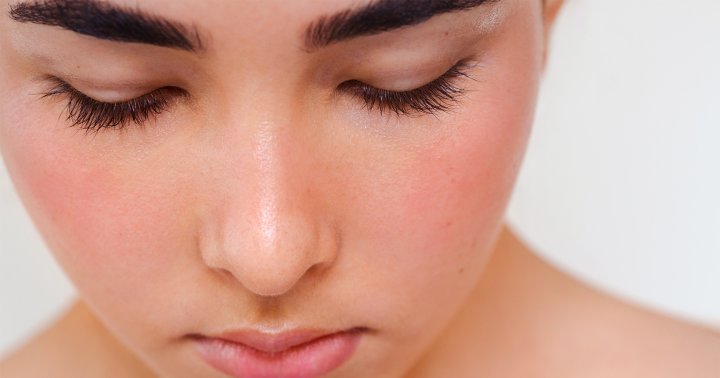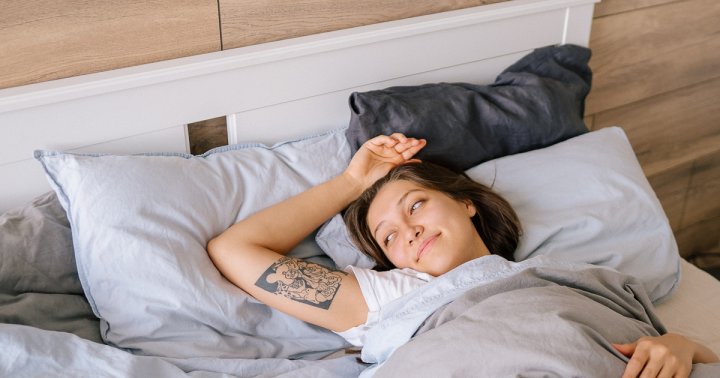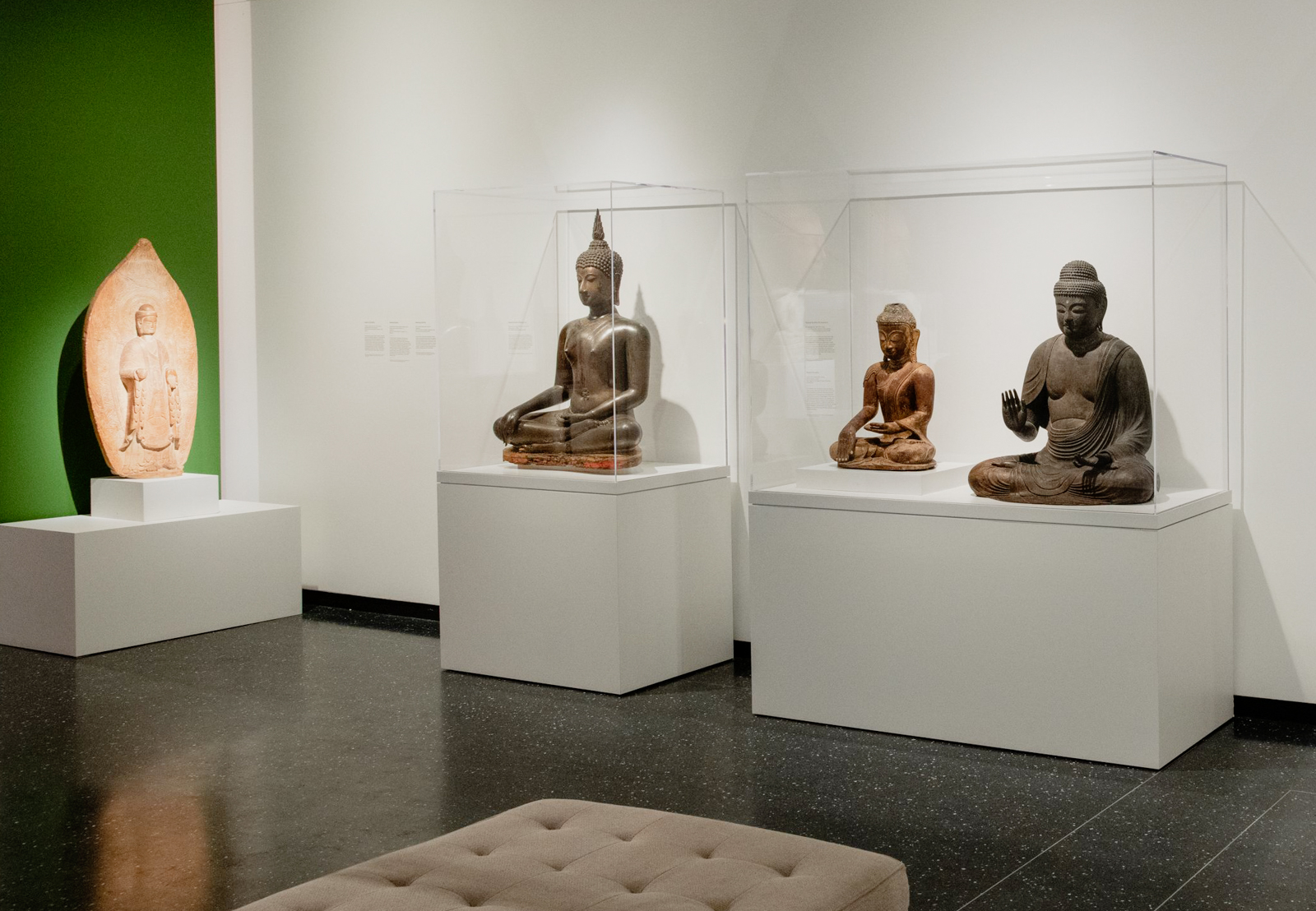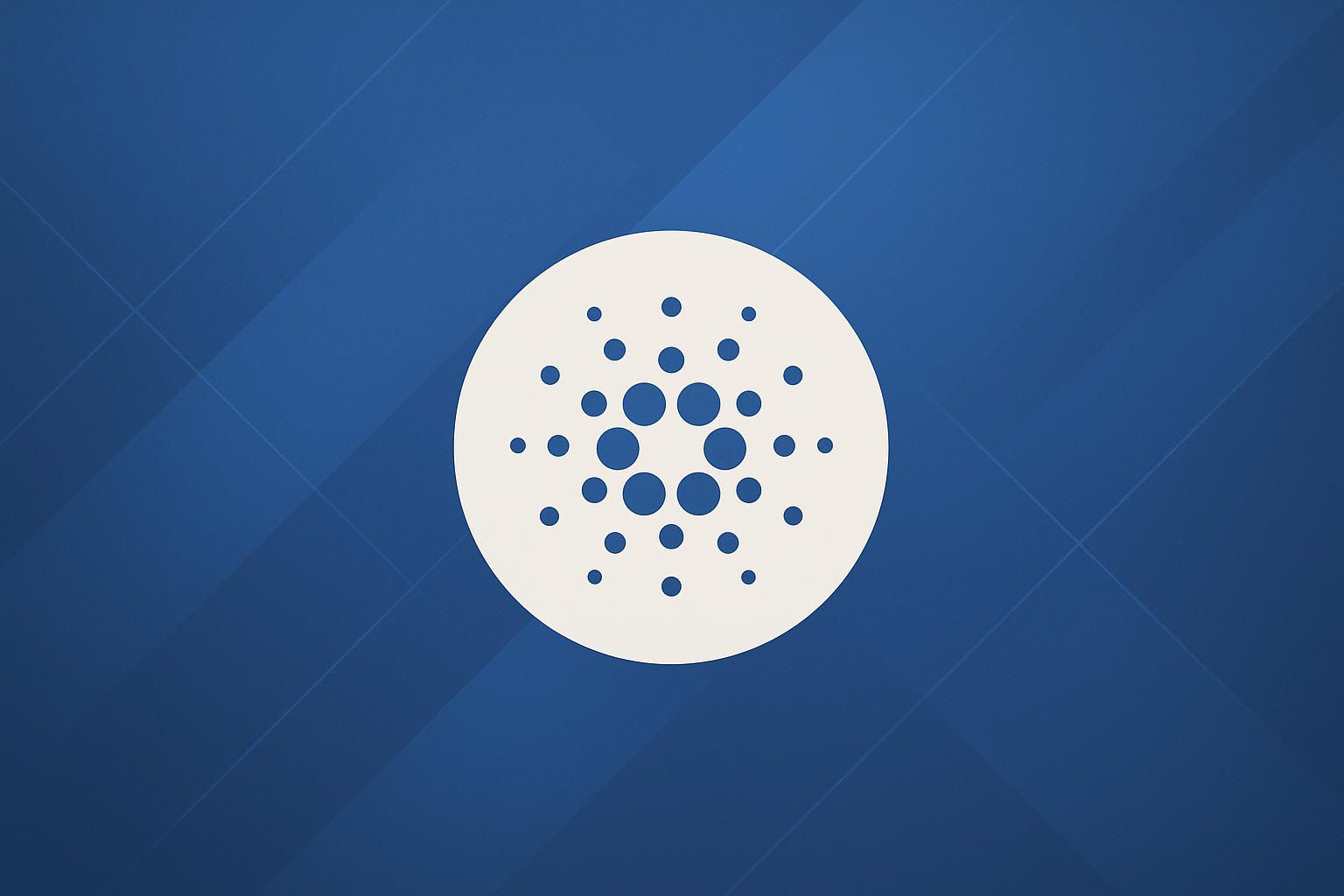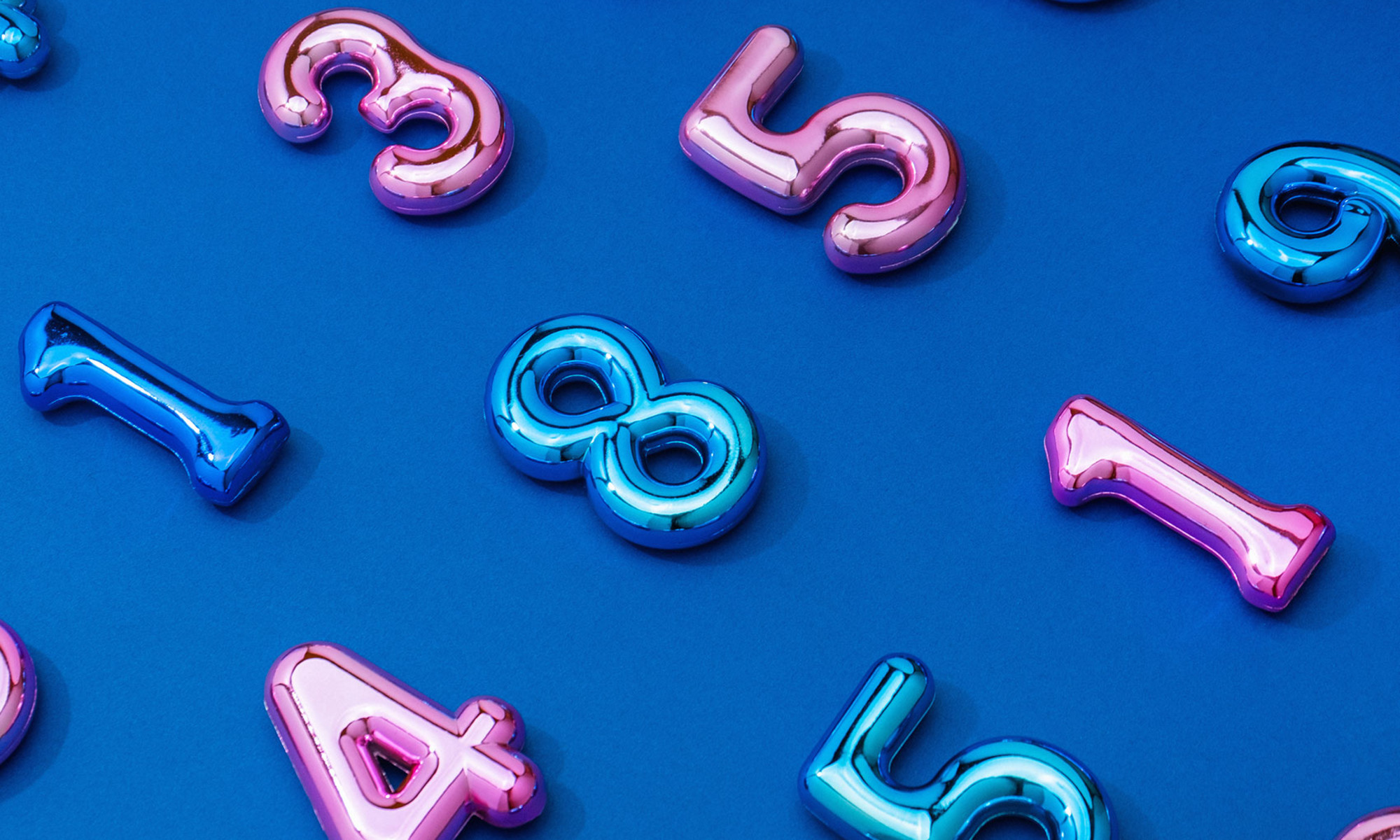Hero Pose (Virasana): Learn How To Become Your Own Hero With This In-Depth Pose Guide
The post Hero Pose (Virasana): Learn How To Become Your Own Hero With This In-Depth Pose Guide appeared first on The Yoga Nomads.
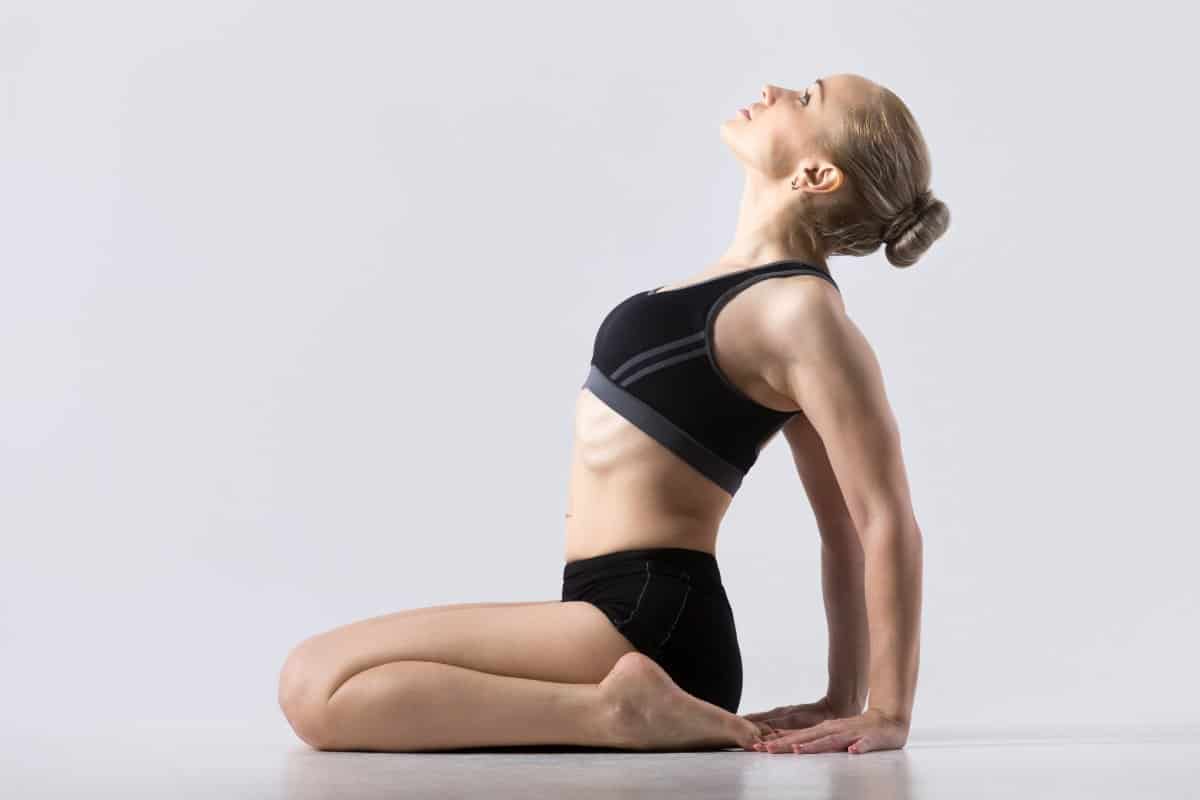
Do you want to meditate, but struggle to find a comfortable position to sit in? Your solution could be to try one of the oldest known yoga poses: Virasana, or Hero Pose!
Traditionally, the physical practice of yoga was meant to prepare the body to sit for meditation. The 15th century text the Hatha Yoga Pradipika — considered to be the original manual on practicing yoga — includes Virasana as one of the 15 original yoga poses! The Sanskrit name, Virasana, comes from the literal translation of the word for “hero” or “warrior” — vira — combined with asana, meaning “posture.”
This intermediate-level seated pose benefits the body in many ways and is commonly used as a posture for meditation or pranayama practice at the end of a yoga sequence. Many people experience discomfort sitting cross-legged for long periods of time as it can cause the lumbar spine to round. Instead, your yoga teacher might suggest Hero Pose.
Virasana, especially when supported with yoga props, is a more comfortable option if you’re planning to sit for meditation or practice pranayama. Maintaining a more upright posture (rather than the rounded lumbar spine typically experienced while sitting cross legged) will promote better breathing while avoiding back pain. It is also a wonderful alternative to the more advanced Lotus Pose, which requires significant flexibility in the hips.
Aside from bringing you more ease in your meditation practice, there are many other benefits Hero Pose can offer!
Benefits of Hero Pose

Physically, there’s a lot going on with Hero Pose. It might look like a simple posture, but you’ll find that Virasana does amazing things for your body. Here are some of the main benefits of Hero Pose:
Stretches the ankles and tops of the feet, which can help shape the arches and improve flat feet Lengthens the ligaments of the knees, supporting mobility and improving range of motion Stretches the thigh muscles Opens the hips Aligns the spine, improves posture to aid in better breathing Stimulates digestion with gentle pressure on the belly Energizes the legs with a rush of new blood circulation when you exit the pose Calms the mind, builds mental focus and concentrationYou can easily see why this seated pose should be added to your regular yoga practice. Keep reading to learn how!
How To Practice Hero Pose

Hero Pose can definitely feel intense in the knees and hip joint due to the extreme flexion and internal hip rotation. Be sure to take your time to enter the pose gently. If at any point you feel discomfort in your inner knees such as a pulling sensation or too much pressure, come out of the pose at once. However, if you move carefully and listen to your body, you can gently push yourself towards increasing your range of motion while experiencing a deep stretch in various parts of your lower body.
Begin in Table Top, on all fours. Untuck your toes so the tops of your feet are resting on your mat Bring your knees closer together, at the midline of your body. Separate your feet slightly wider than your hips, bringing your upper legs into internal rotation from the hips. Slowly press your hips back as you move your hands back. Press your fingertips into the floor on either side of your body and lower yourself down, letting your buttocks rest on your mat (or props) between your feet. Depending on your individual body structure, you may need to adjust your calf muscles to make space for your hips to sit back. To do this, place your hands on the backs of your lower legs. Press down gently and roll your calf muscles toward the outer edges of your leg as you lower your sit bones toward the floor. When you are eventually sitting, bring your hands to the tops of your thighs. Press your hands into your legs to lift your torso, stacking your shoulders over your hips. Reach up through the crown of your head to elongate your spine; feel your torso stretch long and tall. Pull your low belly in and up so your core is subtly activated. Relax your shoulders down away from your ears; widen your collar bones as well as your shoulder blades so that your chest and upper back are open. Keep your hands resting on the tops of your upper thighs. You might choose to turn your palms facing up to receive energy, or keep your palms facing down to feel grounded. Hold this kneeling position, sit bones grounded between your ankles and feet, for several deep breaths. You may gaze straight ahead, towards the floor just in front of your knees, or even clothes your eyes. When you are ready, exit Hero Pose slowly by bringing your hands the floor in front of your and walk them forward to return yourself to a Table Top position before moving on to your next pose.Contraindications
Practicing Hero Pose helps keep the joints and ligaments of your lower body healthy and mobile. However, there are several instances in which Hero Pose may do more harm than good while experiencing certain medical conditions. In these cases, you may consider substituting Hero Pose with one of the variations detailed in the following sections, or even skip it altogether.
If you’ve had recent ankle or knee injuries, or injury to the quadriceps (thigh muscle), you might be able to practice a modified version of Thunderbolt Pose with the support of yoga props. If you suffer from arthritis, do not attempt any version of Hero Pose prior to consulting a medical professional.
For pregnant yogis in their 2nd or 3rd trimester, you’ll be more comfortable practicing the Wide-Legged Hero Pose variation; remember to use as many props as necessary for you to sit comfortably.
Read on to learn exactly how to make Hero Pose work for you, no matter your level of yoga practice!
Modifications For Hero Pose (Virasana)
When practicing yoga, never risk injuring by forcing yourself into a posture, especially in poses like Virasana that affect major joints of the body. Honor the limits of your individual body structure by practicing Hero Pose with a variety of props like yoga blocks or blankets. Especially if you are using Hero Pose as a meditative posture, using these simple modifications will ensure you can sit in the pose for several minutes without knee pain or other discomfort.
Yoga Block: if your are unable to sit your hips all the way to the floor, bring the floor up to you! Place a yoga block horizontally underneath your sitting bones to provide support and a bit of cushion. Or, place a block on each side of you and rest your hands on top of the blocks to keep your torso upright. Folded blanket: if your knees or feet are sensitive, place a folded blanket under the knees or the tops of the feet and ankles for extra cushion. This is especially helpful if you plan to hold the pose for a while in meditation or pranayama practice. Pillow, bolster, or cushion: knee pain may result from the extreme flexion of having your knees bent all the way to their limit. To avoid this, wedge a pillow between your glutes and calf muscles to reduce the flexion of the knees.Wide-Legged Hero Pose
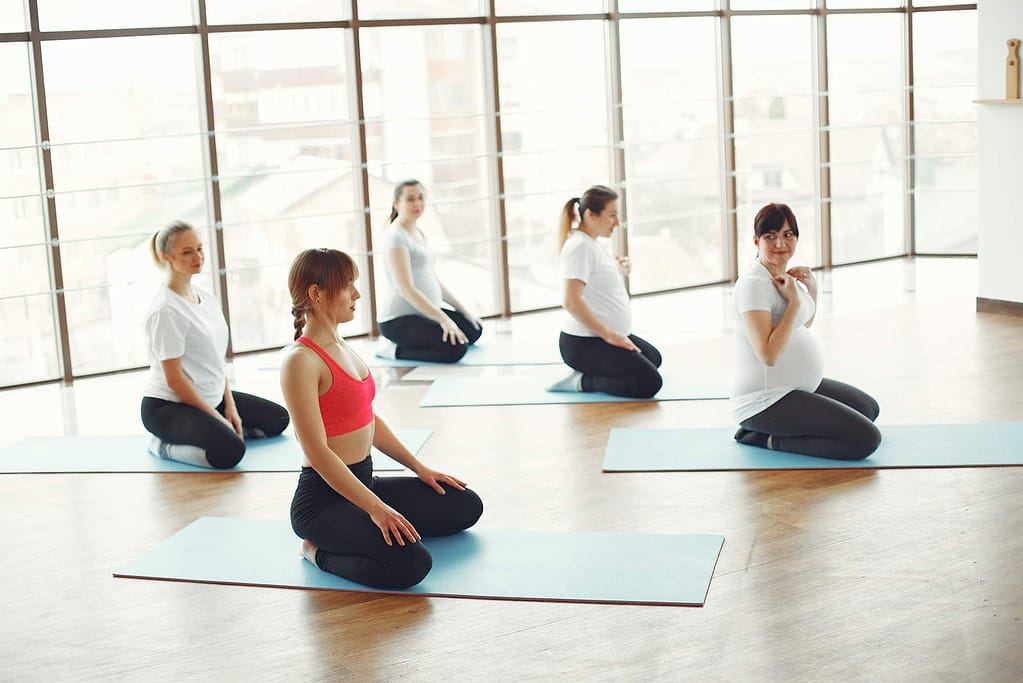
Depending on your body structure, the internal rotation of the hips might not be possible, for simple anatomical reasons. Instead of kneeling with your knees touching, keep your knees separated at a hip width distance in Hero Pose. Practice the rest of the pose following the same cues as detailed above in the step-by-step instructions, sitting your hips between your feet and using yoga props if needed.
Thunderbolt Pose (Vajrasana)
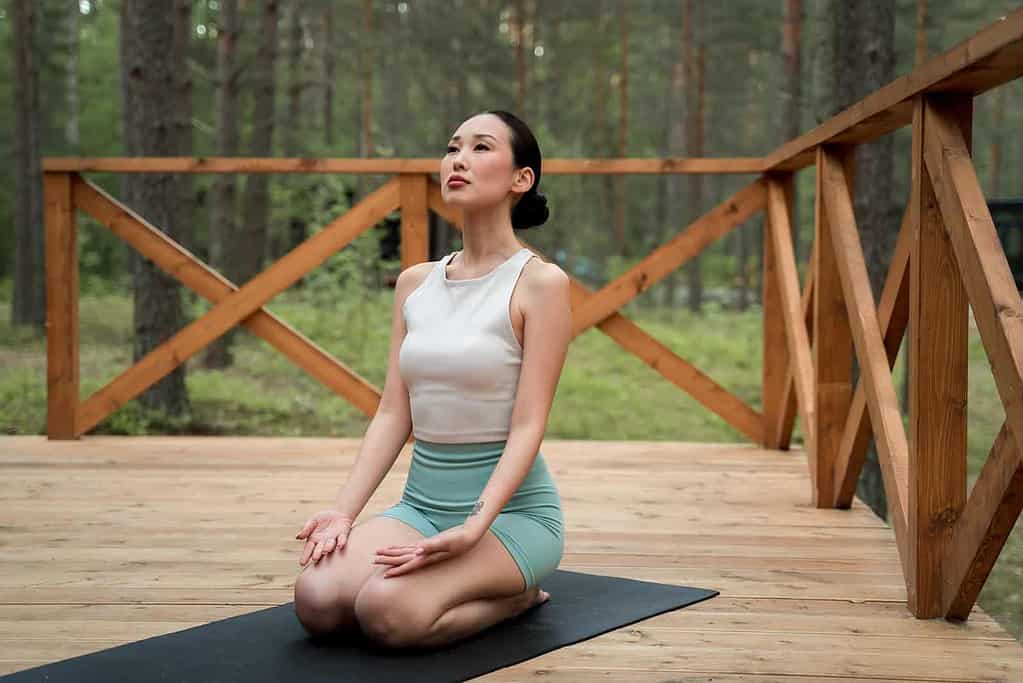
Another way to modify Hero Pose is to substitute it for Thunderbolt (Vajrasana) instead. This is a more straightforward kneeling position, with your hips resting on your heels rather than on the floor. Remember you can use props in this variation as well, in order to make the pose more comfortable.
Begin on all fours in a Table Top position with the tops of your feet flat against the floor. Keep your knees aligned parallel to one another and press your hips back as you walk your hands in towards your knees. Sit back on your heels and lift your torso, stacking your shoulders over your hips. Grow tall through the crown of your head to lengthen your spine. Keep your hands resting on the tops of your thighs; your palms may face up or down. Hold this kneeling position for several breaths. When you are ready, exit the pose by placing your hands to the floor in front of you and walk them forward, returning to Table Top.Variations of Hero Pose
Once you are comfortable in Hero Pose, there are many variations you can try in order to elevate your experience in this seated posture. Here are some of our suggestions!
Reclining Hero Pose (Supta Virasana)
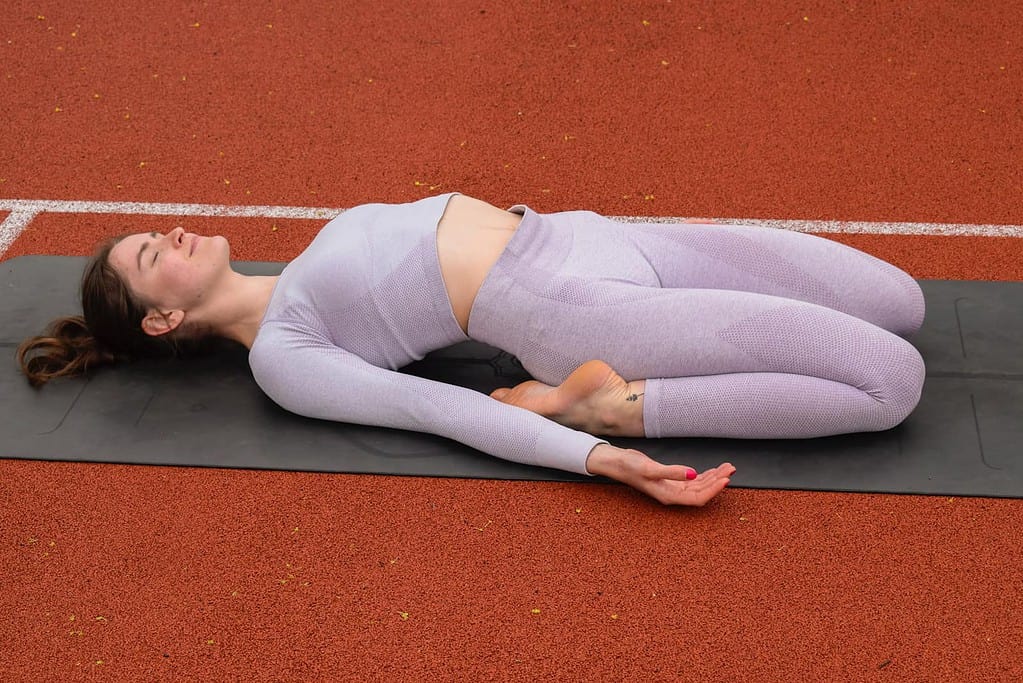
This Reclining Hero variation is concerned a bit more advanced and will give you a deep stretch in your quad muscles as well as your hip flexors.
Come into your fullest expression of Hero Pose. Lean back a bit and bring your hands to the floor behind you, fingertips pointing forward. Keep leaning back little by little, lowering down to your forearms and elbows. Continue all the way down into a reclined position with your upper back, shoulders, and head resting on your mat. Bring your arms by your sides, palms facing up. Stay in Supta Virasana for several deep breaths, releasing more into the pose with each exhale. To come out of Reclining Hero, raise yourself up in stages the same way you lowered down. Tuck your arms in underneath your body and prop yourself up onto your elbows; then, place your hands on the floor and press yourself up into an upright kneeling position.You may also practice a more gentle version of Reclining Hero by placing a bolster behind you. Rather than lowering all the way to the floor, lay back with your back and head resting on the bolster for a less intense, more restorative experience.
Revolved Hero Pose
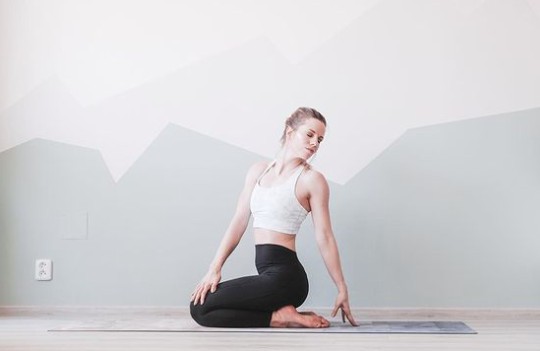
Add a spinal twist with Revolved Hero Pose. As you sit in Virasana, reach your arms overhead with an inhale. On your exhale, turn to your right; place your left hand by your left hip, and reach your right fingertips to the floor behind you. Stay in your twist for a couple breaths, then gently return to your center. Repeat your twist on your other side.
One Leg Folded Forward Bend

Sometimes also called Half Hero Pose, in this variation you will extend one leg forward while the opposite leg is bent into the position of Virasana.
Begin seated on your yoga mat with your legs extended in front of you in Staff Pose. Rock slightly onto your left sitting bone, lifting your right hip. Bend your right leg, tucking your right foot close to your right hip, with the top of your foot pressing into the floor. Sit up tall and reach your arms overhead as you breath in. On your out-breath, hinge from your hips and fold forward over your left leg. Hold the stretch for a few deep breath, then return your torso to an upright position. Release your right leg, returning to Staff Pose. Repeat Half Hero on your other side, left leg bent and your other leg extended.Hero Pose with Arm Variations
Another simple way you can play around with Hero Pose is by trying different arm positions. The possibilities are nearly endless, but here are some of our recommendations we think you’ll enjoy!
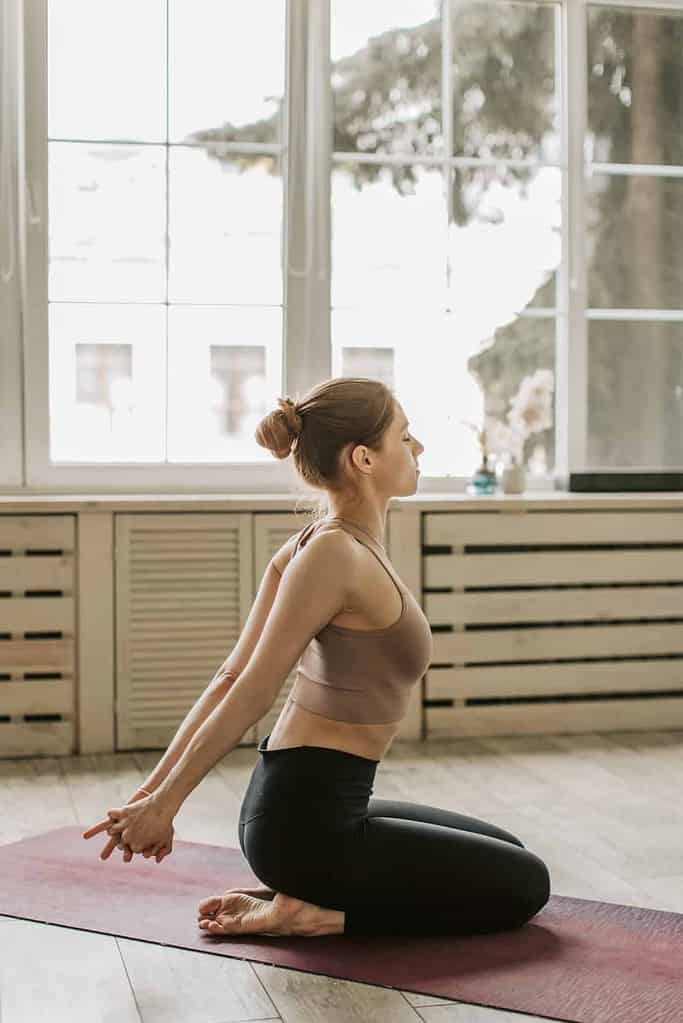 Chest Opener: sitting in Virasana, reach both arms behind you and interlace your fingers to make one fist. Straighten your arms and draw your shoulder blades together, feeling your collarbones widen. Reach your one fist down toward the floor behind you and lift your chin and inch or two.
Cow Face Arms: once in Hero Pose, reach both arms out to your sides and take a breath in. As you exhale, take your right arm up toward the sky and your left arm down behind your low back. Bend both elbows, right fingertips pointing down, left fingertips pointing up. Try to touch the fingertips of both hands together behind the middle of your back, perhaps even clasping your hands together. Hold the position for a few breaths, then release your arms open. Repeat the same process on your other side, left arm reaching up and right arm behind your low back.
Reverse Prayer: while sitting in Hero Pose, open your arms to the sides. Internally rotate your arms so that your palms face behind you. Bend your elbows and bring your palms together in a prayer position behind your back.
Chest Opener: sitting in Virasana, reach both arms behind you and interlace your fingers to make one fist. Straighten your arms and draw your shoulder blades together, feeling your collarbones widen. Reach your one fist down toward the floor behind you and lift your chin and inch or two.
Cow Face Arms: once in Hero Pose, reach both arms out to your sides and take a breath in. As you exhale, take your right arm up toward the sky and your left arm down behind your low back. Bend both elbows, right fingertips pointing down, left fingertips pointing up. Try to touch the fingertips of both hands together behind the middle of your back, perhaps even clasping your hands together. Hold the position for a few breaths, then release your arms open. Repeat the same process on your other side, left arm reaching up and right arm behind your low back.
Reverse Prayer: while sitting in Hero Pose, open your arms to the sides. Internally rotate your arms so that your palms face behind you. Bend your elbows and bring your palms together in a prayer position behind your back.
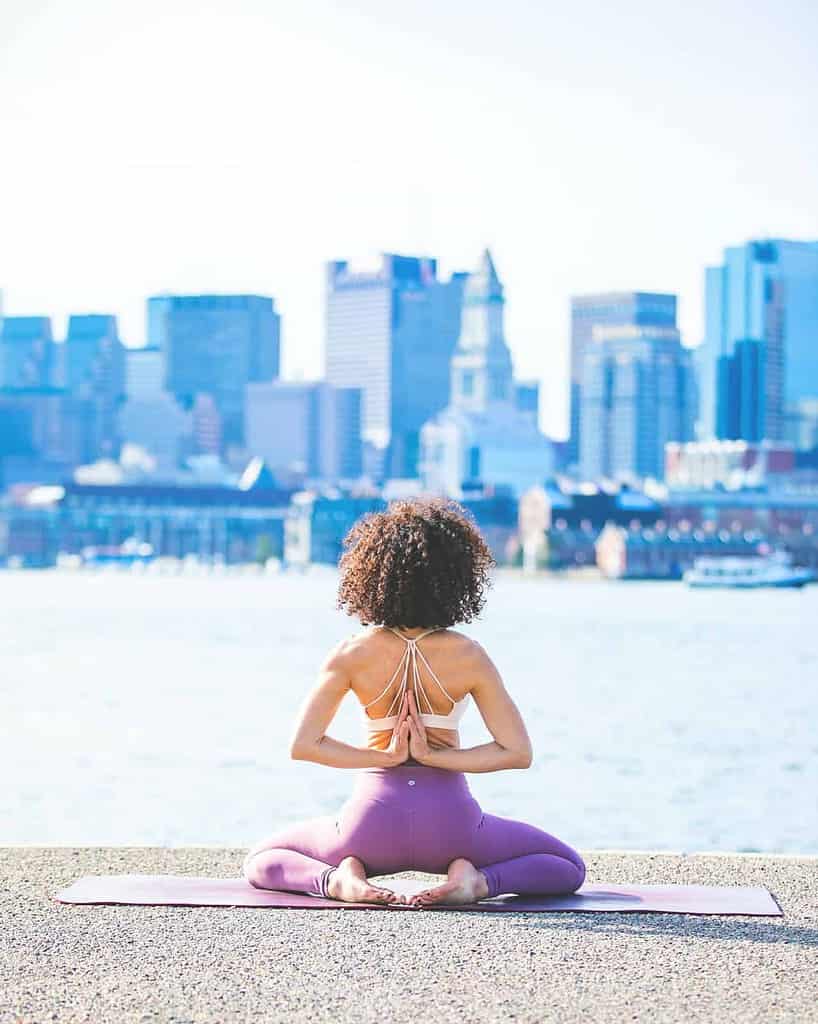
Preparatory Poses
To practice Hero Pose safely, it’s essential that your entire body is properly warmed up. Each of these preparatory poses will target a specific part of the body that is stretched in Virasana.
Bound Angle Pose
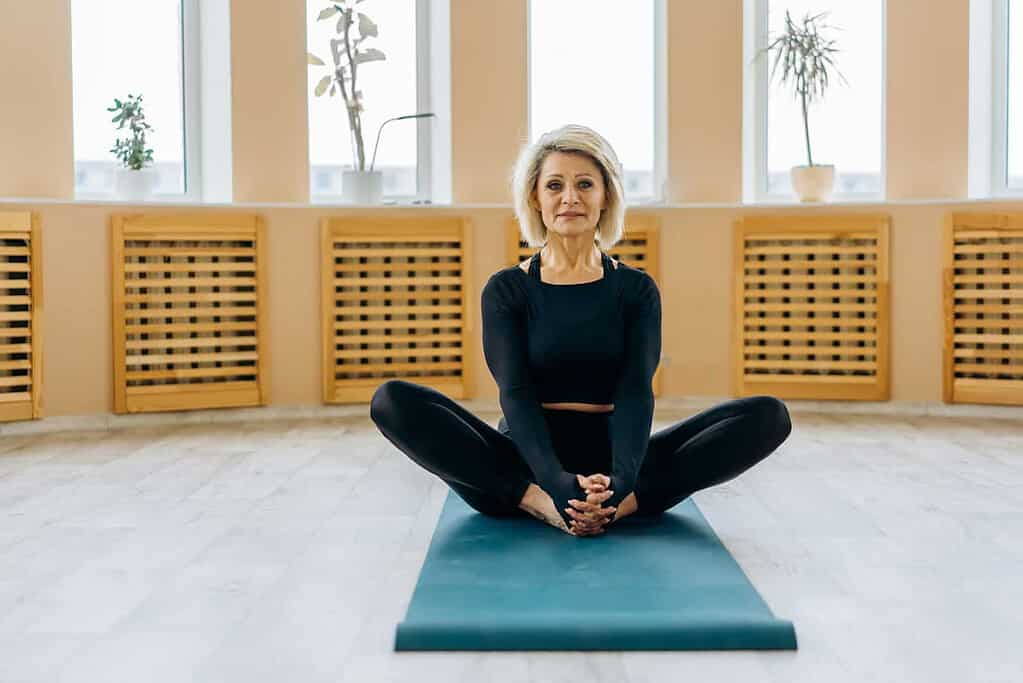
Bound Angle or Butterfly Pose will release your hips and stretch your inner thighs. Learn how to practice Bound Angle Pose with our pose breakdown here.
Child’s Pose
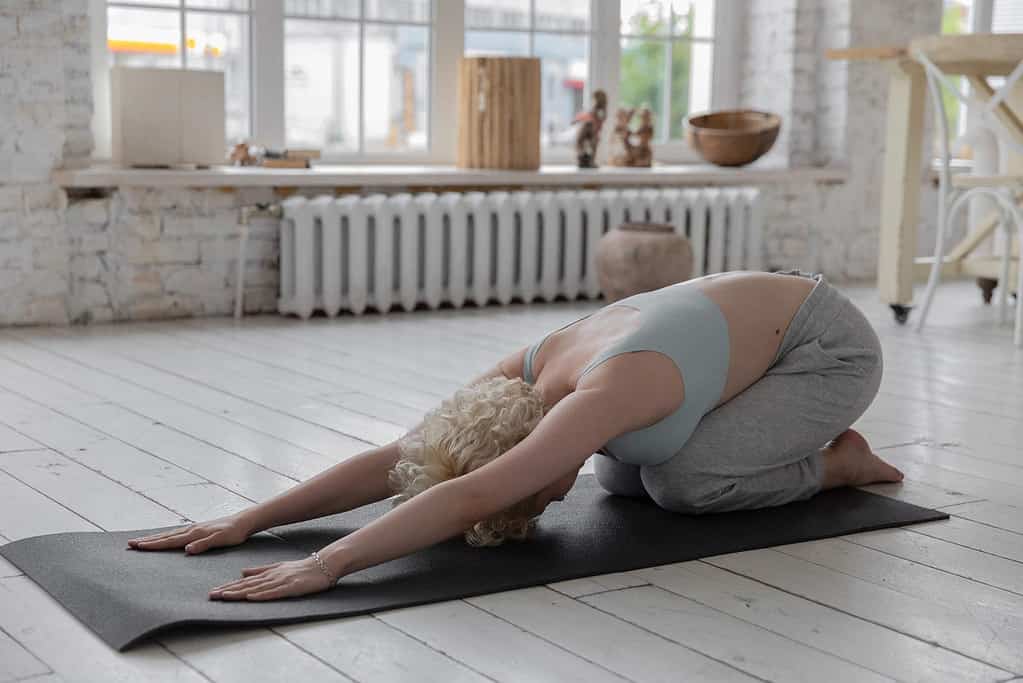
Balasana, or Child’s Pose will again help you open your hips while stretching your back muscles, allowing you to sit with better posture in Hero Pose. For a reminder on proper Child’s Pose form, follow this link!
Low Lunge
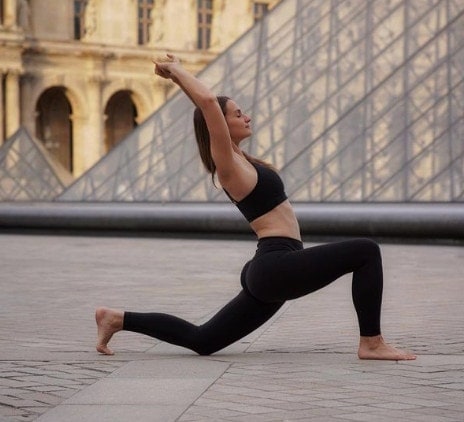
Low Lunge is a great pose for warming up the body that also strengthens and stretches the muscles of the legs and hips. So, this is a perfect pose to practice before Hero! If you’d like to read step-by-step instructions for getting into Low Lunge, view our Yoga Lunge pose breakdown!
Hero (Virasana) Counterposes
Staff Pose

This seated pose follows Virasana perfectly: it will feel great to extend your legs after being in a kneeling position for some time, and your legs will get a rush of fresh blood circulation. Follow the instructions broken down in our Staff Pose guide.
Savasana

The ultimate counterpose, Savasana is a wonderful pose to practice after Virasana, especially following a meditation. Learn all the benefits of Savasana in our ultimate Corpse Pose guide!
Common Questions About Hero Pose
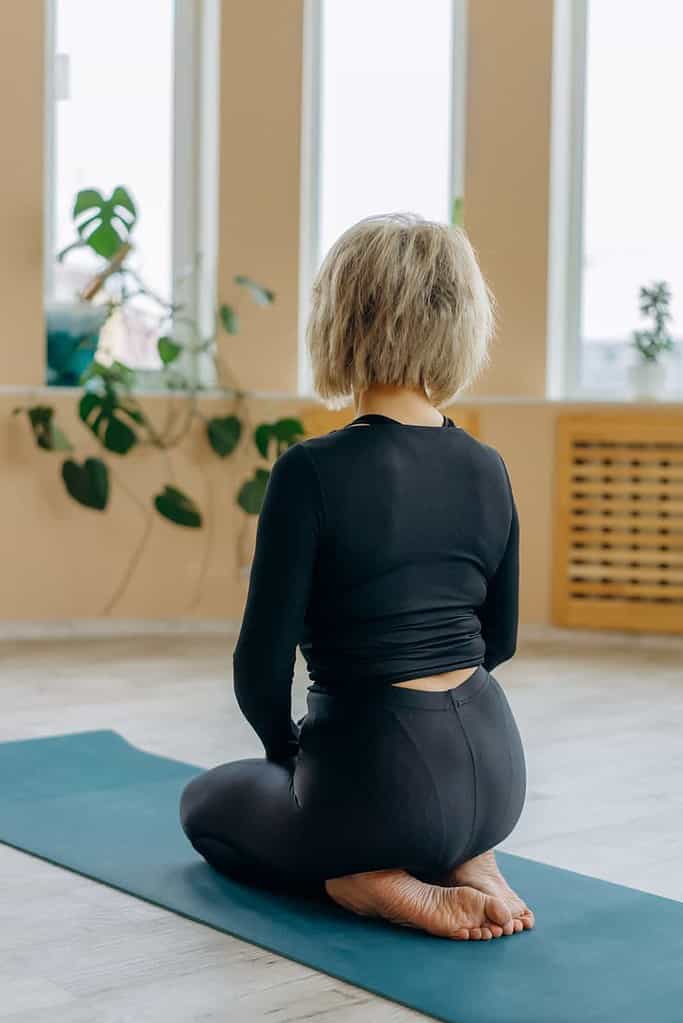
What makes Hero Pose challenging?
Extreme flexion in the knees, and internal rotation at the hips — for some people, anatomically, the internal hip rotation will simply no be possible. In that case, practice Hero Pose with the knees separated, or try substituting Thunderbolt Pose.
What is the main difference between Hero Pose (Virasana) and Thunderbolt Pose (Vajrasana)?
The Sanskrit names for these two poses are quite similar, as are the poses themselves. The main differences are that in Thunderbolt the knees stay parallel to one another, and you sit directly on your heels. In Hero, your bring your knees together with your feet to the outsides of your hips, and the goal is to sit your hips all the way to the floor (or onto a block or cushion).

 Aliver
Aliver 







